Using compressed air cans is the most common method of cleaning your PC. But it is expensive and lasts for just one time. However, regular PC cleaning is an integral part of PC maintenance to keep up its smooth functioning. So, if you cannot access it for any reason, learn how to clean your PC without compressed air.
Key Takeaways
- Clean your PC once a month to keep things working smoothly.
- You can clean your PC without compressed air using brushes, cloths, cotton swabs, vacuum cleaners, and more.
- Be extremely careful while cleaning individual components, as you can damage them otherwise.
Tools Needed
There are a few alternatives to clean your PC without compressed air.
- Brushes: Use toothbrushes or paintbrushes to easily clean CPU cooler fins and other hard-to-reach areas where the cloth is ineffective.
- Piece Of Cloth: Use a microfiber cloth to wipe dust from your PC and other components.
- Thermal Paste: Essential for controlling temperature, replace dry thermal paste during cleaning to prevent CPU overheating and damage.
- Alcohol And Cotton: Use 99% pure IPA alcohol, which generally works better than 70% IPA.
- Vacuum Cleaner: An alternative to compressed air, be cautious of static charge; ensure no static buildup to avoid potential PC damage.
- Dust Blower: If compressed air is unavailable, a dust blower with high air pressure can effectively clean your PC.
- Electric Blower: Expensive but static-free, electric blowers are an alternative to compressed air. Avoid using hot air sources like hair dryers to prevent damage.
Cleaning PC Without Compressed Air
I followed this method, step-by-step to clean dust off my PC without compressed air. Before proceeding, remember not to rub any component with much pressure as it could damage them.
Power Off Your PC
Clean The Casing
Start by using a screwdriver to remove the screws on your PC case’s left side panel. Clean the inside and outside of the case, including any tempered glass panels, using a piece of cloth.
Remove any mesh or grids with dust on them. You can shake off the dust by tapping them against a hard surface. Use a toothbrush to clean these grids gently. Wipe the dust inside your PC case using a cloth, and use a brush or cotton for hard-to-reach places. No need to remove PC components for this cleaning.
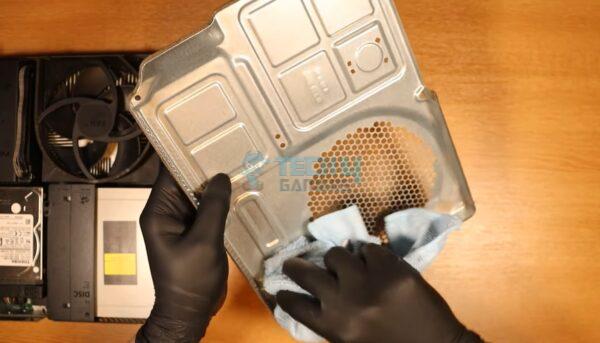
Clean The Parts
Cleaning individual PC components is crucial for maintaining optimal performance. Instead of compressed air, use a blower or a vacuum cleaner to remove dust from components like the PC fans, heatsink, GPU, power supply unit (PSU), and storage drives.
CPU And CPU Cooler
Cleaning the CPU cooler is crucial in maintaining efficient heat dissipation for your CPU. If you have a stock CPU cooler, remove it by rotating and pulling out the support pegs and unscrewing any remaining support using the screwdriver.
Next, clean its heatsink fins and fan using a blower or vacuum cleaner. I gently rub with a toothbrush to eliminate difficult dust. This ensures that accumulated dust doesn’t interrupt airflow, allowing the CPU cooler to function optimally and keep your CPU at a lower temperature.
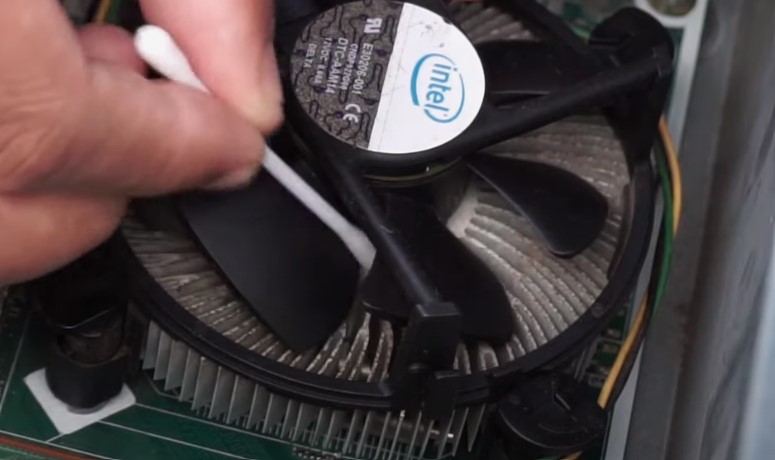
Coming to the CPU, I only replaced the thermal paste. Clean the dried-out thermal paste off the CPU using alcohol wipes and cotton. Before applying the new thermal paste, wait for the alcohol to dry because moisture can damage your PC completely. Lastly, install the CPU cooler.
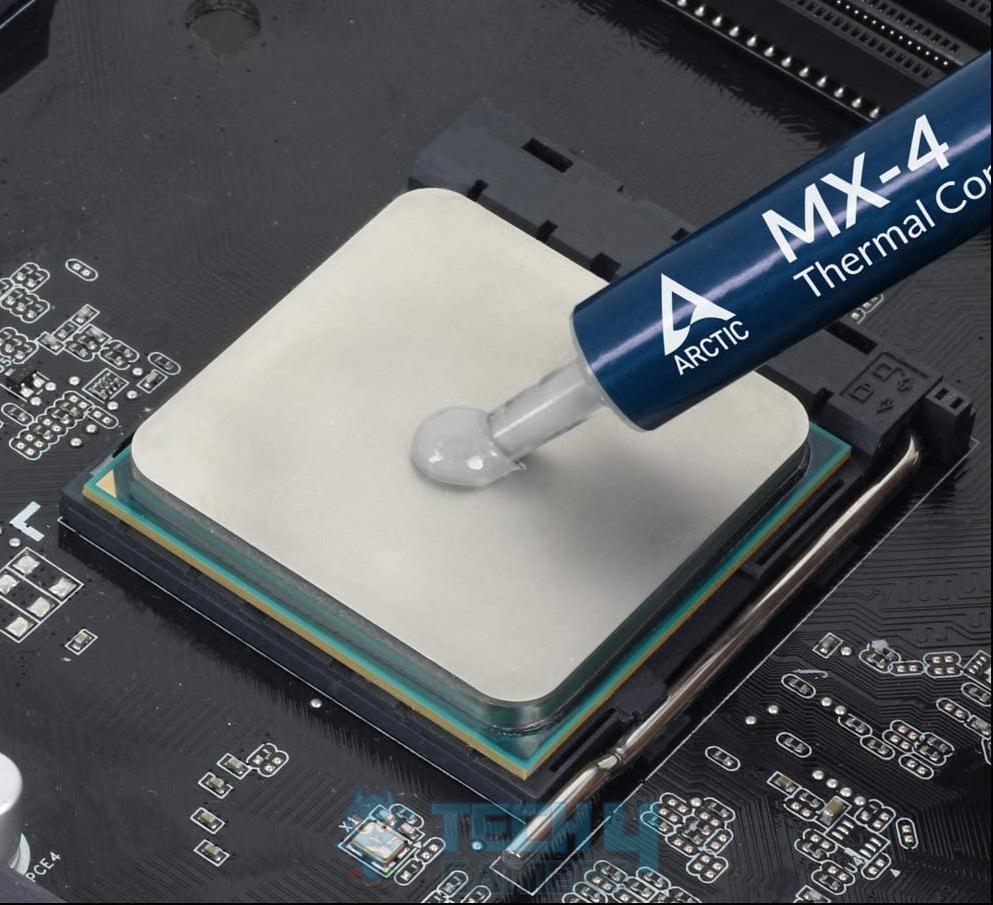
Graphics Card
To clean your graphics card, remove its power cable and unscrew it from the case. Release the PCIe slot clip and gently pull out the graphics card. Wipe the fan with a cloth and alcohol, then use a blower or vacuum cleaner to remove dust from the fans, ensuring they remain stationary during cleaning. Reassemble the graphics card by following the removal steps in reverse order.
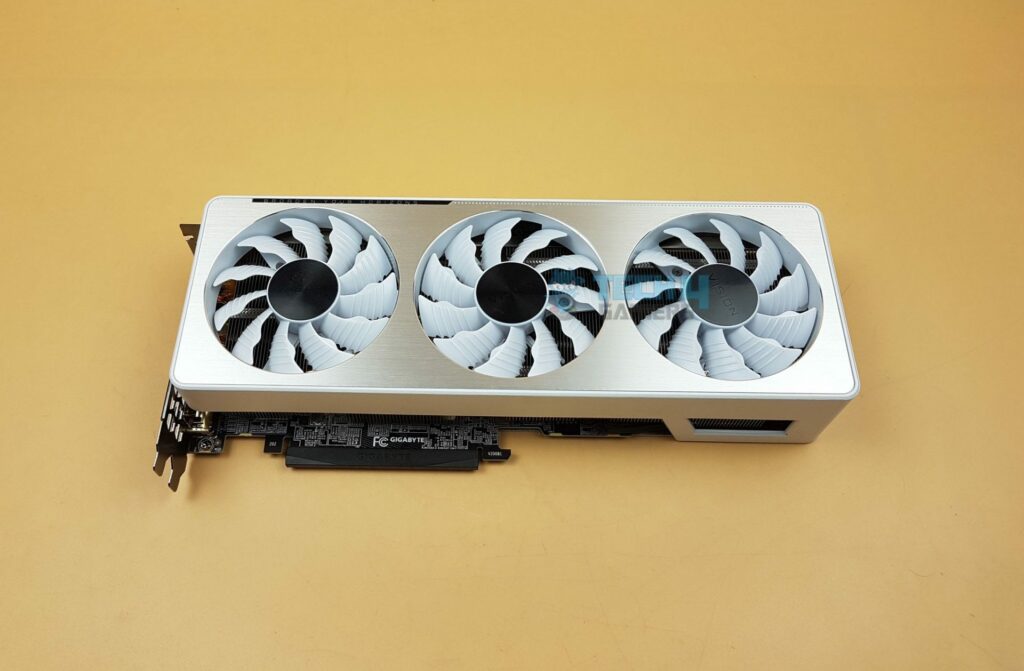
Power Supply
You can clean your PC’s power supply without removing it from the case, but I would not recommend it since it won’t be as thorough. First, disconnect the power supply from your PC’s cables and remove the connectors holding it.

Pull the power supply carefully from its hatchet and clean it with alcohol wipes. For the fan, use a toothbrush to prevent it from moving. Lastly, plug the power supply back in and secure it.
Motherboard
The motherboard does not catch a lot of dust due to its vertical placement, but cleaning it as part of your PC cleaning routine is a good practice. Safely clean the motherboard and the RAM with a clean microfiber cloth. Once done, reassemble your PC and all the components you might’ve taken out.
Can You Damage Your PC If You Clean It Without Compressed Air?
You can damage your PC if you attempt to clean it without compressed air, but it depends on how you go about it. As per my experience, compressed air is typically the best tool for cleaning a PC because it can reach into small spaces and blow away dust and debris clogging up a computer’s fans or heatsinks.
You may be tempted to use other methods to clean your PC, such as a vacuum or a brush. While these tools effectively removed surface-level dust on my PC, they can also cause damage if not used properly. For example, with a vacuum, you risk generating static electricity, which can damage sensitive components like your motherboard or RAM. Similarly, a too-stiff brush could scratch the components or dislodge small parts.
Another problem I faced was that I could not reach all the nooks and crannies of my PC, where dust was visibly accumulated. This could result in a buildup of dust and debris that could eventually cause your components to overheat and fail.
Pros And Cons Of Cleaning PC Without Compressed Air
While compressed air is a popular choice for cleaning PCs, it is not the only option. Here are some pros and cons you should be familiar with.
Pros
- Cost-Effective: It can be a cost-effective alternative. You don’t have to spend money on a can of compressed air, which can add up over time, especially if you clean your PC frequently.
- Eco-Friendly: Compressed air cans are not environmentally friendly. They contain harmful chemicals and gases that can harm the ozone layer. Cleaning your PC without using compressed air can benefit the environment.
- Better Results: Compressed air may blow dust and debris around your PC, making cleaning harder. When you manually clean your PC, you can see the results of your work right away.
Cons
- Time-Consuming: You may have to spend more time cleaning each component to ensure that all the dust and debris are removed.
- Risk of Damage: When you clean your PC manually, there is a risk of damaging the delicate components inside. Using the wrong cleaning tool or technique can cause scratches, static damage, or other damage that can affect your PC’s performance.
- Limited Reach: Hard-to-reach places can be reached by compressed air. If you do not have the right tools or techniques, you may be unable to clean some components properly.
- Incomplete Cleaning: By not using compressed air, you may be unable to remove stubborn dust and debris.
Alternatives To Compressed Air
I found a few alternatives to compressed air, although none were as effective in cleaning the PC as a compressed air can. But they may come in handy if you cannot access compressed air.
Vacuum Cleaners
Using a vacuum cleaner for PC cleaning has cost-saving benefits and potentially better cleaning power than compressed air. However, drawbacks include the risk of static electricity causing a circuit shortage and the vacuum’s bulkiness hindering access to tight spaces. Additionally, the suction action may turn older fans into generators, posing a risk of voltage surplus and potential system failure if the PC is on.
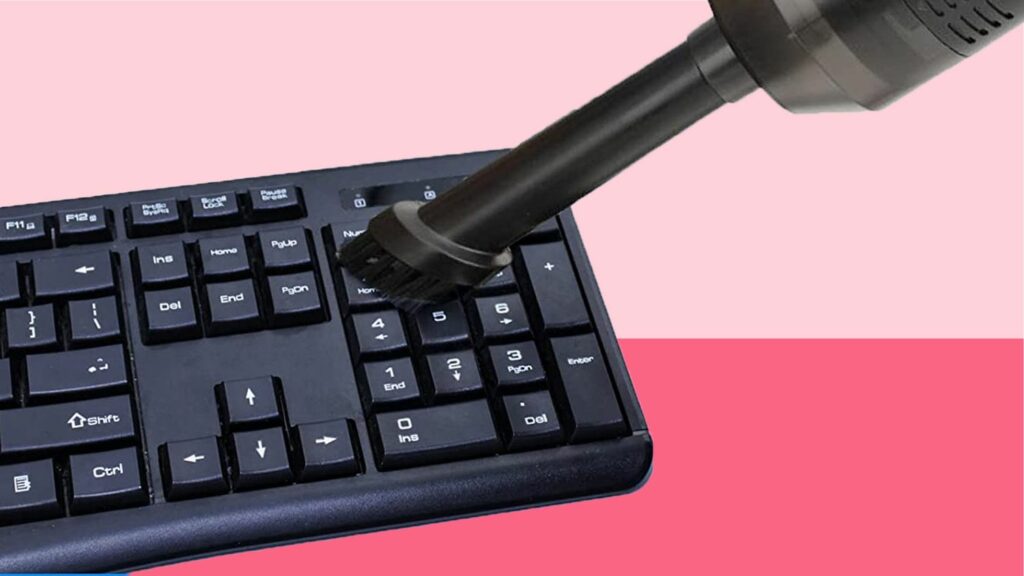
Dust And Electric Blower
Using a blower for PC cleaning offers an effective and reusable dust removal option with a powerful blowing action. Blowers are designed to eliminate static electricity. On the other hand, it comes with a risk of blowing out hot air that could damage PC components.
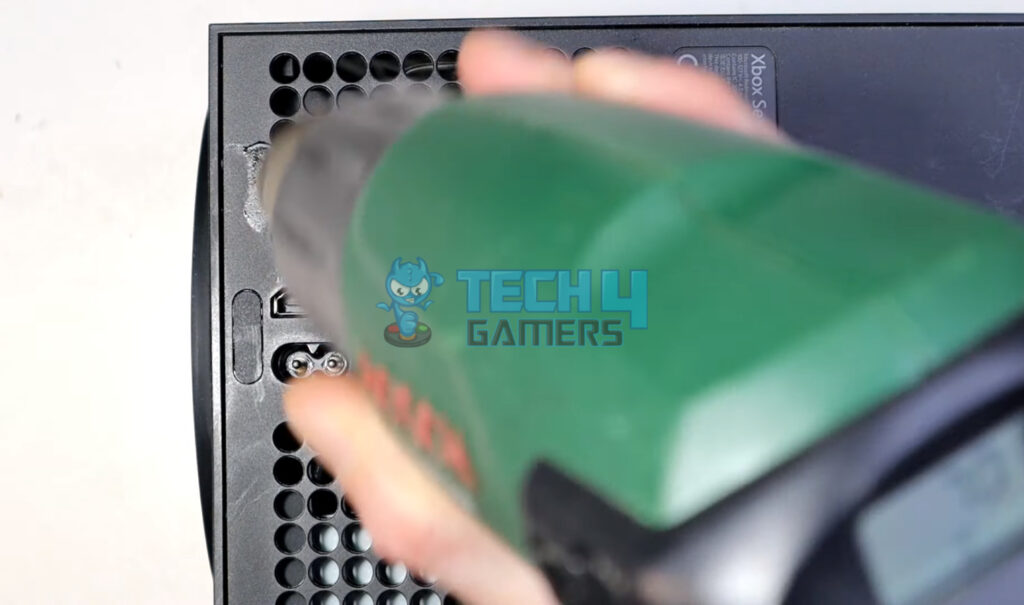
Silicon Hand Blowers
Silicon hand blowers offer a reliable alternative to compressed air for PC cleaning. They are reusable, easy to use, and compatible enough to reach challenging spots. However, they have low wind speeds, which may not be enough to remove difficult dust.
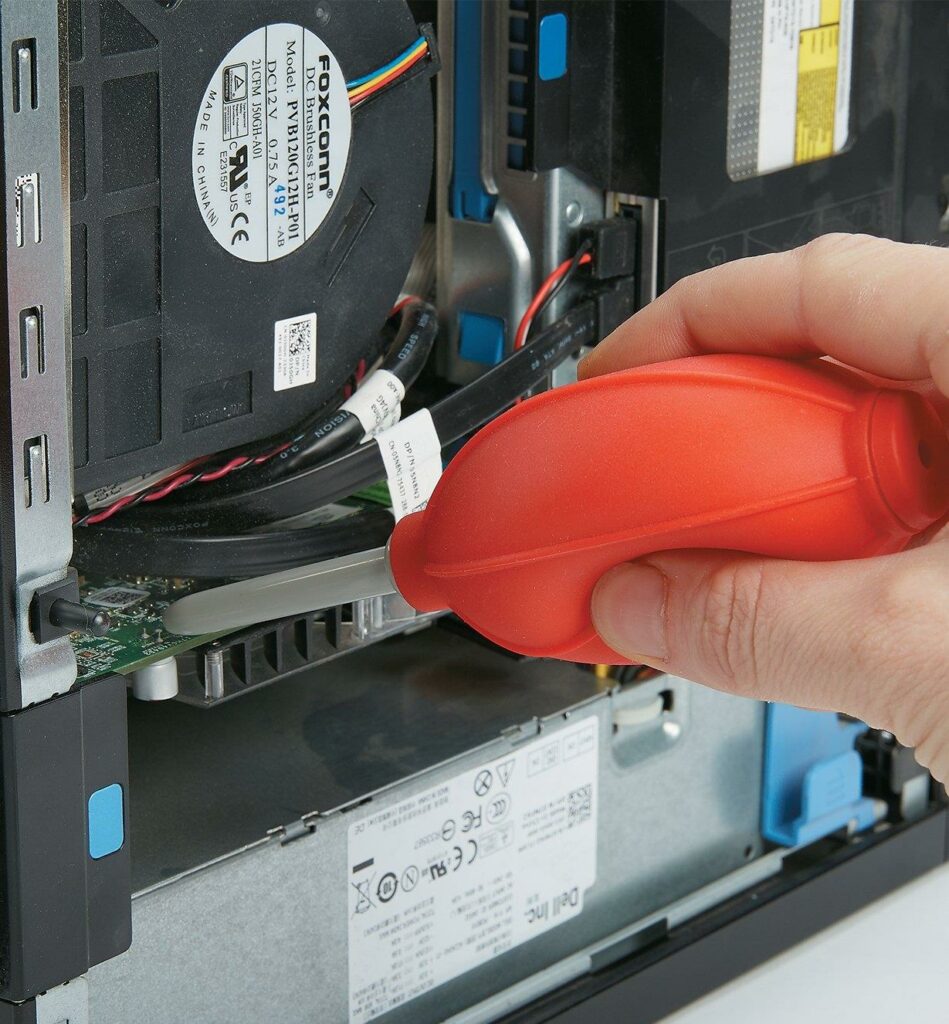
Final Words
After cleaning my PC with the above-mentioned tools, instead of compressed air, I noticed that most of the dust was gone, but some remained in the crooks and corners of my PC. Although, I did experience a better PC performance after the cleaning, thus this technique is enough to get the job done until you have access to compressed air.
FAQs
Yes, you can clean your PC without compressed air using tools such as brushes, cotton swabs, and more.
If you’re not careful enough with the parts, you will damage the components while cleaning them.
More About PC Cleaning:
Thank you! Please share your positive feedback. 🔋
How could we improve this post? Please Help us. 😔
[How To’s & Guides Editor]
Haddi has been in the Gaming and tech Space for over 10 Years Now; he has worked on notable websites like eXputer, Gamepur, Gear Siege, Gearnuke, and plenty more. He is an expert at Games & PC Hardware; you can expect him to solve any problem. People often joke, that if there is any problem anyone can solve, Haddi can solve it faster. Currently, Haddi writes and manages a Team of Experts at Tech4Gamers.
Contact: Haddi@tech4gamers.com


 Threads
Threads![How To Check PC Specs? [All Components + Methods] How To Check PC Specs](https://tech4gamers.com/wp-content/uploads/2022/12/How-To-Check-PC-Specs-218x150.jpg)
![How To Change Color On Sades Keyboard? [GUIDE] HOW TO CHANGE SADES KEYBOARD COLOR](https://tech4gamers.com/wp-content/uploads/2023/05/HOW-TO-CHANGE-SADES-KEYBOARD-COLOR-218x150.jpg)
![How To Clean Xbox Console & Controller [One & Series X/S]](https://tech4gamers.com/wp-content/uploads/2023/08/How-to-Clean-Xbox-Console-Controller-218x150.jpg)
![How To Use Discord On Xbox? [Works On All Platforms] How to use discord on Xbox](https://tech4gamers.com/wp-content/uploads/2024/01/How-to-use-discord-on-xbox-218x150.jpg)
![How To Disable Firewall? [All Methods Guide] How To Disable Firewall](https://tech4gamers.com/wp-content/uploads/2024/01/How-To-Disable-Firewall-218x150.jpg)